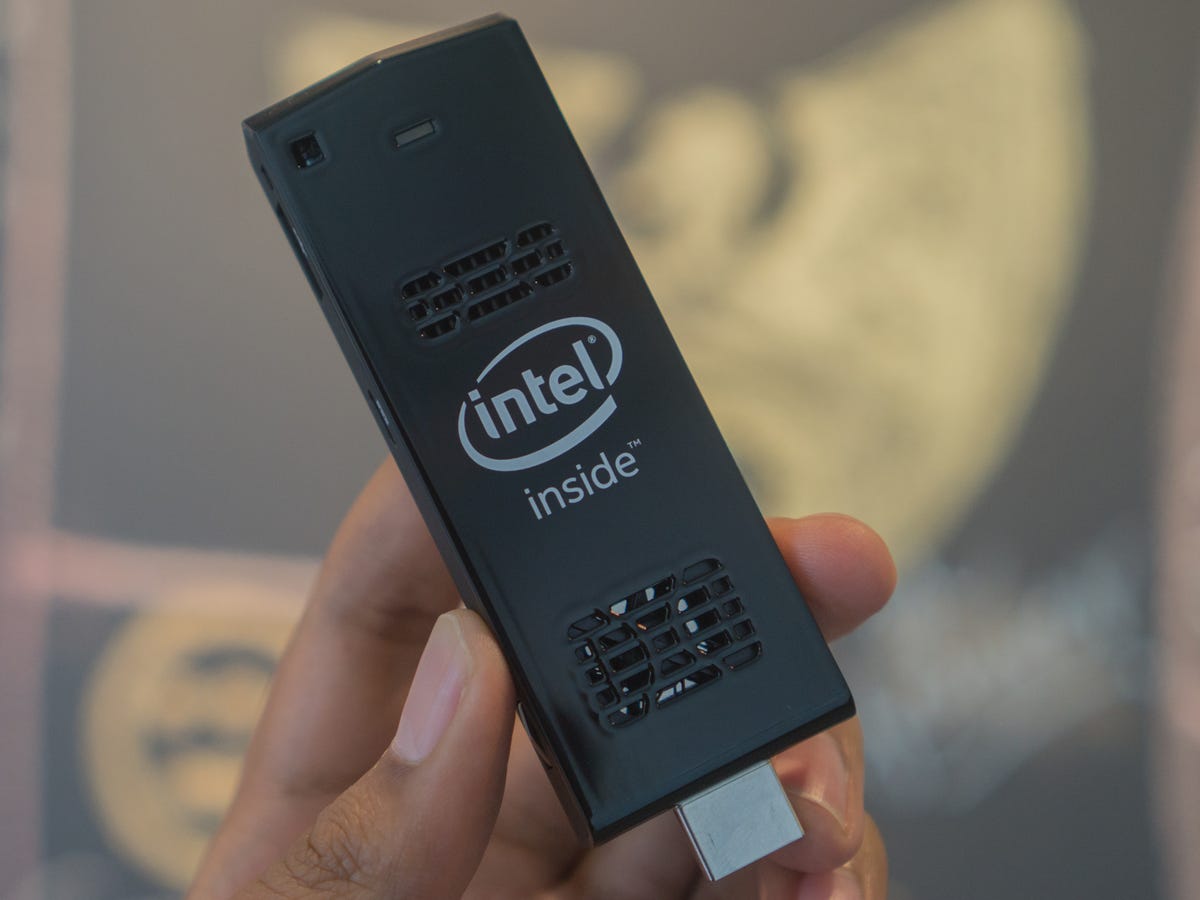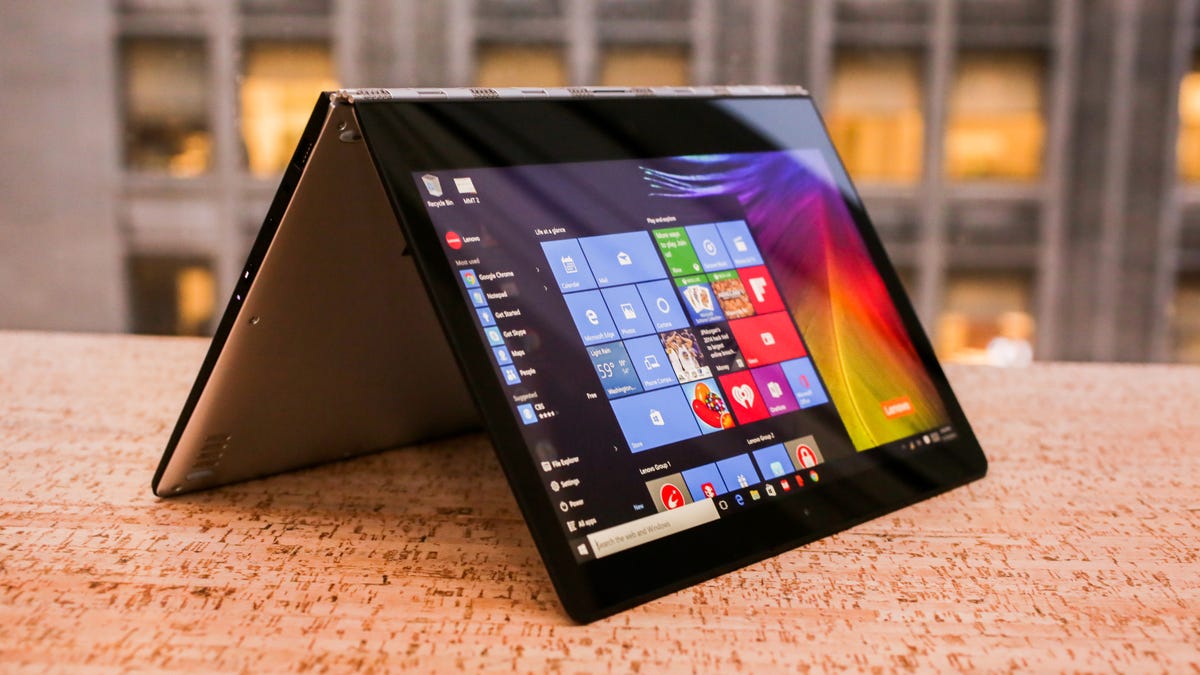This story is part of CES 2016. Our editors bring you complete CES 2016 coverage and scour the showroom floor for the hottest new tech gadgets around.
New computers are always a big category at CES — the world’s biggest consumer electronics trade show that takes place in Las Vegas the first week of January — and that topic has grown over the past several years from just laptops and desktops to include 2-in-1 hybrids, Windows tablets and Chrome OS systems. Most PC makers save their major new products for the holiday or back-to-school seasons, but a good number of debuts still happen in Vegas at the dawn of each year, often tied to a handful of key trends.
Games go big
While some of the bigger companies continue to cut back on what they’re showing — Microsoft and Apple don’t exhibit at the show, and most PC makers have events away from the crowded floor of the Las Vegas Convention Center — smaller boutique PC gaming brands are still going strong, using the show as an opportunity to roll out new designs and products.
Companies such as Origin PC, Digital Storm and Razer frequently have new gaming PCs and accessories at CES, and with the PC gaming market still in the midst of a general upswing, this year we can expect more of the same.
One thing to look for this year is growth in customization and boutique PC companies relying more on custom chassis designs, rather than using off-the-shelf parts. That said, no major component upgrades, in the form of powerful new graphics cards from Nvidia or CPUs from Intel, are expected. Instead, we’ll see current-gen parts in new body designs, with new features.
A great example is the small but growing number of gaming laptops that make use of the more powerful desktop version of Nvidia’s GeForce GTX 980 graphics card, which will allow these systems (from Asus, Origin PC and others) to make use of next year’s big game technology, virtual reality. As it’s currently planned, the first generation of commercially available Oculus Rift headsets will require a desktop GPU to run, a problem that will be solved by cramming desktop cards inside big, heavy laptop bodies.


Nate Ralph/CNET
The incredible shrinking desktop
One of the coolest new products spotted at the 2015 CES was Intel’s Compute Stick, a full Windows 8 desktop PC (currently around $120 in the US) built into a device that looked like a big USB memory stick. Running an Intel Atom processor and with an HDMI output at one end, it was perfect for plugging into a TV or monitor and doing some basic Web surfing or video streaming. That was followed by similar device announcements from Lenovo, Asus and others. The recently released Asus Chromebit turned out to be a surprisingly zippy sub-$100 Chrome OS system.
This year, we can expect to see more microdesktops, as some call these stick-based systems. Despite being very clever, there’s still plenty of room for improvement over the first-gen versions, and the jump to Windows 10 and new low-power Intel chips could help make these very practical computers for kids, small businesses or frequent travelers.


Sarah Tew/CNET
Hybrids keep happening
At first, 2-in-1 hybrid PCs were a way for big companies such as Dell, HP and Lenovo to keep up with the unstoppable iPad juggernaut. The first wave melded laptop-like clamshells with Windows 8 and its touch-first interface, and the results were, to be generous, mixed. Much of the hardware felt forced, and Windows 8 satisfied neither as a tablet operating system, nor as a desktop one.
But over the past few years, hybrid Windows PCs have come into their own, and the best current models are about offering flexible ways to work and play, and not about trying to stop consumers from defecting to an iPad (and many of those early defectors came back, after discovering iOS was too limited for what they needed).
At CES 2016, expect to see the next generation of these half-and-half machines. We’re not predicting any major new twists, but the style and design of hybrids, originally all over the place, has settled into fold-back hinges, where the display folds back a full 360 degrees into a thick tablet; and pull-apart hybrids, with magnetic connections that separate the display from the keyboard base with a strong tug. We’ll also see more and better hybrids for professional and business users, as well as screen sizes moving past the usual 10- to 13-inch models into larger displays.


Scott Stein/CNET
Surprises, or not
The show is always good for a surprise or two, often in the form of wild-looking proof-of-concept prototypes with little chance of release. But the most important new computers are typically the workhorse systems that let you work more efficiently, not changing radically, but instead steadily improving with longer battery life and slimmer, lighter bodies. That’s the catch to covering laptops, desktops and hybrids at a flashy show like CES — long after the Las Vegas Convention Center clears out, we’ll remember the computers that just work better, not the ones with the flashiest lights or most colorful paint jobs.




